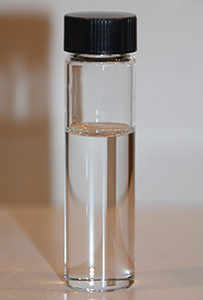
December 30, 2024
In the constantly changing field of nanotechnology, scientists and engineers are working to make systems from electronics to heat transfer systems more efficient and well performing by studying fluids that contain tiny particles called nanoparticles. The main goal of this research is to understand and improve how well fluids can conduct heat.
Thermal conductivity, or the ability of a material to transfer heat, is important for many things from electronics to renewable energy systems. Improving thermal conductivity is of utmost importance because it directly affects how well heat can be moved from one place to another. This is where nanoparticles play a critical role. In this article, we’ll explore the interesting world of fluids that conduct heat better because of nanoparticles, looking at how they work, where they’re used, and the challenges they face.
Thermal conductivity in fluids is influenced by several factors such as viscosity, temperature, particle arrangements as well as particle size. Fluids with high thermal conductivity are essential for efficient heat transfer in various applications, from electronics to renewable energy systems.
To gain a deeper understanding, Thermtest provides an excellent resource for exploring thermal conductivity.
Water, oil, and other conventional fluids have limitations in testing their thermal conductivity. It leads to finding innovative solutions to meet the demands of various evolving applications. In the past, the main ways to deal with these limits were to either increase the liquid flow or improve the design of the heat transfer system. However, these methods also have their practical limits.
The big challenge lies in finding ways to improve heat conduction without significantly changing other important properties of the liquid, like how thick it is or how stable it is. This is where the integration of nanoparticles comes into play.
Nanoparticles, as the name suggests, are tiny particles measuring between 1 and 100 nanometers in size. They have special features, like a bigger surface area compared to their volume, quantum effects, and more reactivity than larger particles. These features make them great for improving how well heat moves through liquids.
Different kinds of nanoparticles such as graphene and metal oxides are being studied by researchers and used to boost heat transfer. Their ability to interact with fluid molecules at the atomic level greatly enhances thermal conductivity.

Figure 1: Ethylene glycol (CH2OH) sample most commonly used as automotive antifreeze.
The integration of nanoparticles into liquids works due to the “nano” effect, i.e. tiny particles behave distinctively than larger particles at the nanometer scale. The interaction between these tiny particles and the liquid molecules allows for quicker energy movement, which helps spread heat more evenly throughout the liquid.
One important process is Brownian motion, which is the random movement of nanoparticles inside the liquid. This movement increases the interaction between the nanoparticles and the liquid molecules, making the heat transfer more efficient. The nanoparticles also create new paths for heat to move through, greatly improving the liquid’s ability to conduct heat.
Dispersion and stability of nanoparticles are two important factors for it to work well. If nanoparticles clump together or settle, the improved heat properties can be lost. To stop this, the surface of the nanoparticles keeps changing, helping to keep the particles from aggregating or settling down so they stay evenly spread in the liquid.
The stability of nanoparticles is also based on factors like viscosity and pH level. Adjusting these qualities to ensure the stability of nanofluids and even distribution is important for getting the best heat transfer benefits.
Hybrid nanofluids mix different types of nanoparticles to create better results. By choosing and combining these nanoparticles wisely, scientists can improve thermal conductivity and gather other useful properties.
For example, mixing graphene and metal oxide nanoparticles can result in superior heat transfer capabilities than using a single type of nanoparticle alone.
However, hybrid nanofluids have their own issues, such as keeping the nanoparticles stable and stopping them from interacting in ways that make them less effective. Despite these challenges, they show great promise for uses that require very high levels of heat efficiency.
Nanofluids are transforming various industries by enhancing heat transfer in important applications:
Electronic cooling: Nanofluids help keep high-performance electronic devices from overheating.
Car cooling systems: Engines and radiators work better with nanofluids, which cool them more effectively and improve the car’s efficiency. Learn more about the heat transfer properties of nanofluids and their applications in improving cooling systems.

Figure 2: Nanofluids are used in cars to keep them cool and prevent overheating.
Solar energy systems: Nanofluids allow solar energy systems to capture and store more heat, making them more efficient.
Medical uses: Nanofluids are being studied for use in drug delivery and heat treatments, where exact temperature control is needed.
Although nanoparticles provide many advantages, there are concerns about their safety. The possible harm from nanoparticles means they need to be handled carefully, especially in situations where people might be exposed. Therefore, it is crucial to manage and dispose of nanomaterials appropriately, to ensure reduced risk to the environment and health.
To deal with these concerns, many rules and guidelines are being established. Furthermore, more and more researchers are trying to find the long-term impact that nanoparticles have on both the environment and human health. In addition, thermal conductivity testing plays a vital role in enhancing our understanding of nanoparticles and fluids. By gaining deeper knowledge about their behavior and properties, researchers can address safety considerations more effectively and overcome associated challenges. This approach contributes to creating safer applications for nanoparticles in various industries.
As methods for making nanoparticles get better, the chances to boost heat transfer in liquids are increasing. Scientists are looking into new uses, from energy storage to advanced electronics. Working together across different fields and universities is leading to new ideas that could open more possibilities for nanofluids.
As research progresses and new ideas develop, fluids containing nanoparticles have created new opportunities in the fields of heat transfer and thermal management. The combination of nanotechnology and fluid dynamics has improved thermal conductivity, transformed industries and made systems more efficient and sustainable.
Thermtest’s MP-V instrument with THW method is the perfect solution for you to test electronically conductive fluids like nanofluids as it helps to reduce electrical interference and polarization effects that leads to inaccurate results.
M.I. Pryazhnikov, A. M. (2017). Thermal conductivity measurements of nanofluids. International Journal of Heat and Mass Transfer, 1275-1282. Retrieved from International Journal of Heat and Mass Transfer.
Moore, S. (2020, March 06). How Can We Improve the Thermal Conductivity of Fluids Using Nanoparticles? Retrieved from Azonano.com: https://www.azonano.com/article.aspx?ArticleID=5436
Wenhua Yu, D. M. (2011, July 25). Review and Comparison of Nanofluid Thermal Conductivity and Heat Transfer Enhancements. Retrieved from Taylor and Francis Online: https://www.tandfonline.com/doi/abs/10.1080/01457630701850851